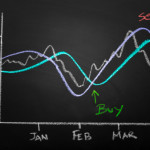 WisdomTree, the New York-based exchange-traded fund sponsor best known for its fundamental indexes, has further enhanced its offering of dividend focused ETFs with the recent launch of a dividend payout fund that tracks US companies showing good dividend growth prospects.
WisdomTree, the New York-based exchange-traded fund sponsor best known for its fundamental indexes, has further enhanced its offering of dividend focused ETFs with the recent launch of a dividend payout fund that tracks US companies showing good dividend growth prospects.
The new product, the WisdomTree US Dividend Growth Fund (DGRW), is likely to compete with other funds in the dividend growth niche, especially the Vanguard Dividend Appreciation ETF (VIG) and the S&P SPDR Dividend ETF (SDY), both which have more than $10 billion in AUM.
In keeping with the sponsor’s fundamental indexing approach, the new fund tracks the WisdomTree US Dividend Growth Index, a proprietary dividend-weighted benchmark that consists of about 300 companies that have a market capitalization of at least $2 billion. The constituents are selected based on both quality and growth factors that gives a holistic approach to dividend investing while blending characteristics of both active and passive management styles. The index is rebalanced annually to reflect the proportionate share of cash dividends each component is projected to pay in the coming year.
To be eligible for the fund, securities must have dividend coverage ratio greater than 1.0x as WisdomTree believes companies that do not have enough earnings to support dividend are less likely to be dividend growth leaders.
The underlying benchmark takes a unique forward-looking dividend growth approach rather than the industry-standard where dividend funds use a backward-looking growth screen. While technology firms have been the greatest contributors to dividend growth over the past five years, most widely followed dividend-growth indexes will not include them for the next 10 or even 20 years since they employ historical dividend-growth screens that require a company to have paid or raised dividends for 5, 10 or 20 years.
For example, Apple is now the largest dividend payer in the US, but benchmarks such as the Dow Jones US Select Dividend Index, the NASDAQ US Dividend Achievers Select Index and the S&P High Yield Dividend Aristocrats Index won’t be able to include Apple until 2017, 2023 and 2033, respectively.
The traditional backward-looking indexes thus deprives many investors from capitalizing on the shifting trends in the dividend landscape as dividends from defensive sectors such as utilities, consumer staples, healthcare and telecommunication services etc. have become well known.
Additionally, DGRW also targets growth factors based on long-term earnings growth expectations while taking into account three year historical averages for return on equity (ROE) and return on assets (ROA).
The fund has an annual expense ratio of 0.28 percent.
Disclosure: No holdings
Contact Ulli